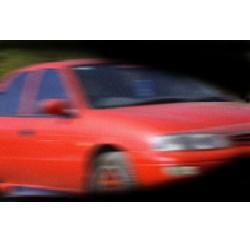Queensland drowsy driving studied
Published on 26 September, 2002
You've rolled down the windows, turned the radio up full blast, unwrapped a new piece of gum and slapped your face a bit. Your stare straight ahead for kilometres and your head begins to weave and bob - so does your car. You're falling asleep at the wheel of your car and you're not alone. Drivers coming in the other direction are doing the same thing.
 Central Queensland University has completed preliminary research on factors that could counteract driver's fatigue especially in rural and regional Queensland where drivers tend to travel longer distances during "non-peak" hours. "There's fatigue management for commercial drivers and long-distance haulers, but there are no systems in place for 'regular drivers'," explained Dennis Smith, Traffic Coordinator for the Central Police Region.
Central Queensland University has completed preliminary research on factors that could counteract driver's fatigue especially in rural and regional Queensland where drivers tend to travel longer distances during "non-peak" hours. "There's fatigue management for commercial drivers and long-distance haulers, but there are no systems in place for 'regular drivers'," explained Dennis Smith, Traffic Coordinator for the Central Police Region.
"We know that drivers are aware of fatigue symptoms... however, drivers are not aware of the speed of sleep onset. There is work underway to find solutions to driver fatigue. The difficulty is finding cost effective, reliable and socially acceptable solutions to the problems," said Dr Lee Di Milia of CQU's School of Management.
The risk of having a fatigue related accidents is highest at about 3AM and 3PM, when the body's physiological systems are hard-wired to slow down.
The biggest obstacle to overcome is the notion that an individual has full control over his or her fatigue, according to Dr Di Milia. They don't. Drivers generally become aware of their sleepiness, usually 15 or 20 minutes too late, while on the road, part of the way to their destination when it is too dangerous to be behind the wheel. "We need a long term strategy underpinned by road engineering, in-car technology and community education," explains Dr Di Milia.
"For example reengineering road designs avoiding long straight stretches, adding rumble strips, installing wider shoulders, and alternating road surfaces. In-car technologies will need to become reliable and cost effective. Clearly these solutions are not cheap." Inspector Smith and Dr Di Milia agree that driving while sleepy can be as dangerous as drink driving. It's also more prevalent than statistics offer.
"We're hoping to work closely with CQU to make the roads safer for everyone. We need to know how many fatigued drivers there are... that's where we'll start," said inspector Smith.

